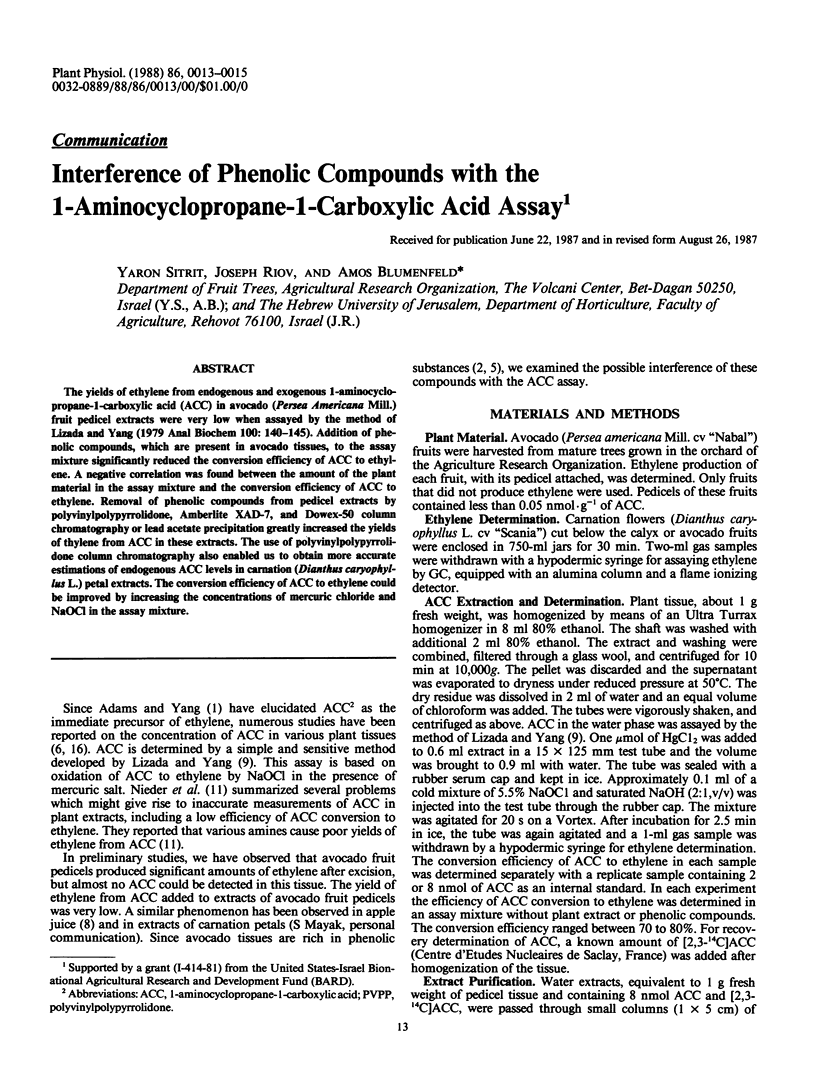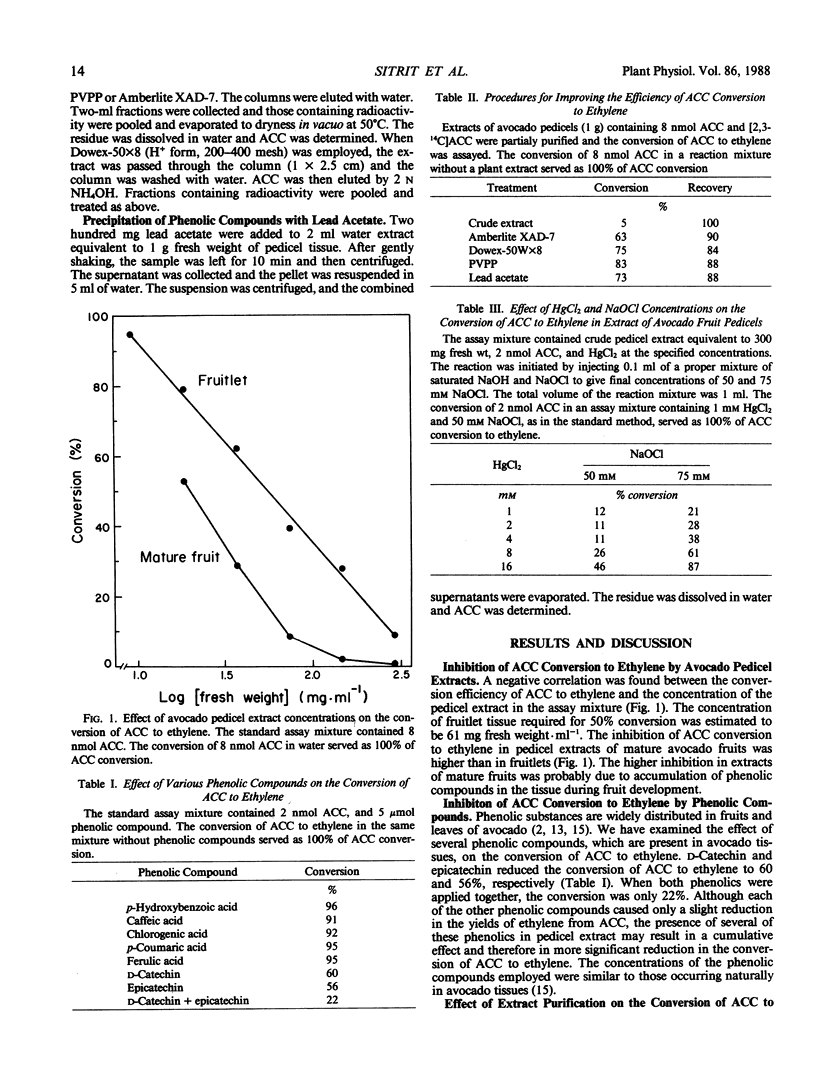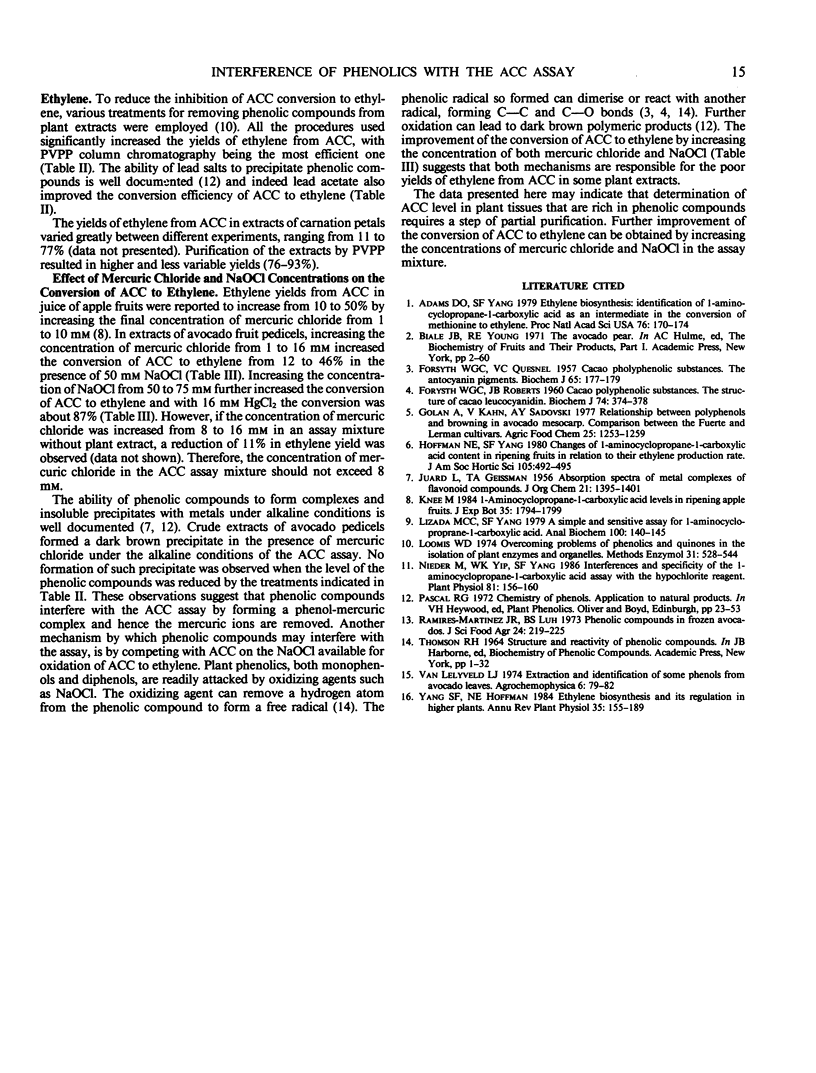Abstract
The yields of ethylene from endogenous and exogenous 1-aminocyclo-propane-1-carboxylic acid (ACC) in avocado (Persea Americana Mill.) fruit pedicel extracts were very low when assayed by the method of Lizada and Yang (1979 Anal Biochem 100: 140-145). Addition of phenolic compounds, which are present in avocado tissues, to the assay mixture significantly reduced the conversion efficiency of ACC to ethylene. A negative correlation was found between the amount of the plant material in the assay mixture and the conversion efficiency of ACC to ethylene. Removal of phenolic compounds from pedicel extracts by polyvinylpolypyrrolidone, Amberlite XAD-7, and Dowex-50 column chromatography or lead acetate precipitation greatly increased the yields of thylene from ACC in these extracts. The use of polyvinylpolypyrrolidone column chromatography also enabled us to obtain more accurate estimations of endogenous ACC levels in carnation (Dianthus caryophyllus L.) petal extracts. The conversion efficiency of ACC to ethylene could be improved by increasing the concentrations of mercuric chloride and NaOCl in the assay mixture.
Full text
PDF


Selected References
These references are in PubMed. This may not be the complete list of references from this article.
- Adams D. O., Yang S. F. Ethylene biosynthesis: Identification of 1-aminocyclopropane-1-carboxylic acid as an intermediate in the conversion of methionine to ethylene. Proc Natl Acad Sci U S A. 1979 Jan;76(1):170–174. doi: 10.1073/pnas.76.1.170. [DOI] [PMC free article] [PubMed] [Google Scholar]
- FORSYTH W. G., QUESNEL V. C. Cacao polyphenolic substances. 4. The anthocyanin pigments. Biochem J. 1957 Jan;65(1):177–179. doi: 10.1042/bj0650177. [DOI] [PMC free article] [PubMed] [Google Scholar]
- FORSYTH W. G., ROBERTS J. B. Cacao polyphenolic substances. 5. The structure of cacao 'leucocyanidin 1. Biochem J. 1960 Feb;74:374–378. doi: 10.1042/bj0740374. [DOI] [PMC free article] [PubMed] [Google Scholar]
- Lizada M. C., Yang S. F. A simple and sensitive assay for 1-aminocyclopropane-1-carboxylic acid. Anal Biochem. 1979 Nov 15;100(1):140–145. doi: 10.1016/0003-2697(79)90123-4. [DOI] [PubMed] [Google Scholar]
- Loomis W. D. Overcoming problems of phenolics and quinones in the isolation of plant enzymes and organelles. Methods Enzymol. 1974;31:528–544. doi: 10.1016/0076-6879(74)31057-9. [DOI] [PubMed] [Google Scholar]
- Nieder M., Yip W. K., Yang S. F. Interferences and specificity of the 1-aminocyclopropane-1-carboxylic Acid assay with the hypochlorite reagent. Plant Physiol. 1986 May;81(1):156–160. doi: 10.1104/pp.81.1.156. [DOI] [PMC free article] [PubMed] [Google Scholar]
- Simmons D. H., Kahn F. H., Guze L. B. Blood gases of rats at altitude and sea level. Fed Proc. 1966 Jul-Aug;25(4):1247–1253. [PubMed] [Google Scholar]


